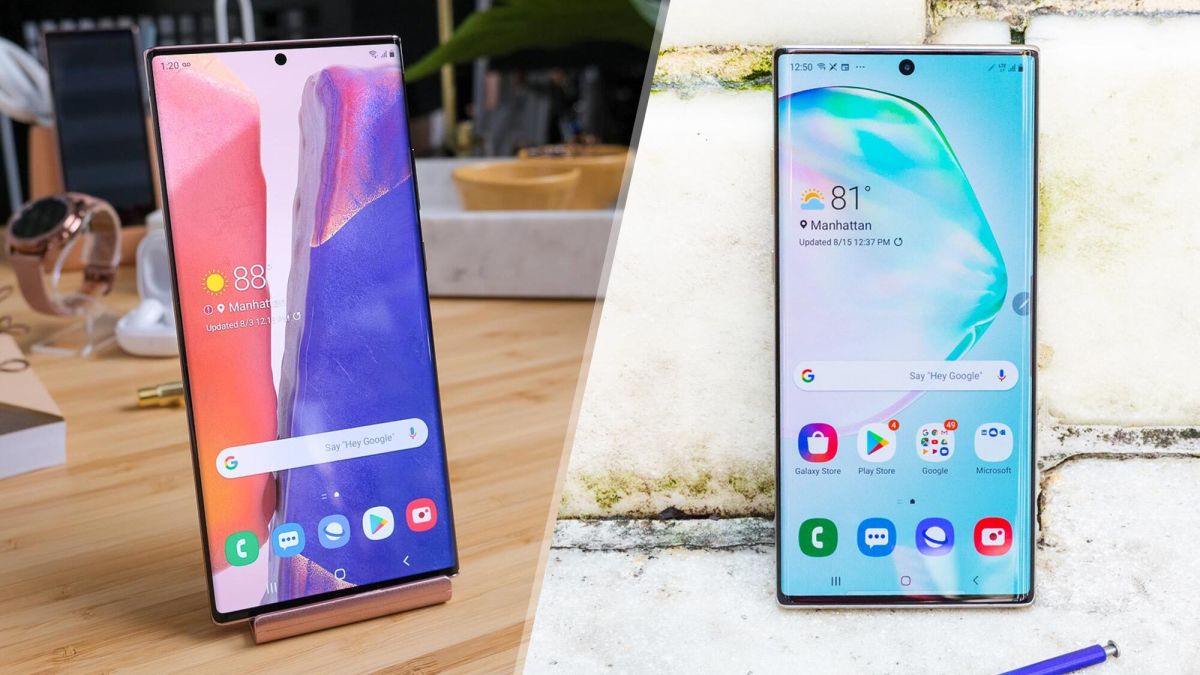The Galaxy Note series has always followed a “Go big or go home” philosophy, and that’s very much on display with the Samsung Galaxy Note 20 Ultra. The new phone has one of the largest screens you’ll ever find on any phone — at least on one that doesn’t fold open — along with the most powerful processor available to an Android device. You’ll also get multiple cameras and an upgraded S Pen with less latency than ever before.
In fact, the Note 20 Ultra introduces so many changes, you might wonder if it’s a completely different device from the Galaxy Note 10 Plus that used to be Samsung’s best big phone. While the new model still has a lot in common with last year’s super-sized phone, a lot has changed since the Note 10 Plus made its debut a year ago.
This Galaxy Note 20 Ultra vs. Galaxy Note 10 Plus face-off considers all the changes Samsung has introduced to its phablet lineup, as we determine how big an upgrade the Note 20 Ultra is over its predecessor.
Galaxy Note 20 Ultra vs. Galaxy Note 10 Plus specs
| Galaxy Note 20 Ultra | Galaxy Note 10 Plus | |
| Starting price | $1,299 | $1,099 |
| Screen size (Resolution) | 6.9-inch AMOLED (3088×1440; 120Hz) | |
| CPU | Snapdragon 865 Plus | Snapdragon 855 |
| RAM | 12GB | 12GB |
| Storage | 128GB, 512GB | 256GB, 512GB |
| Rear cameras | 108MP wide (ƒ/1.8); 12MP telephoto with 5x optical zoom (ƒ/3.0); 12MP ultra wide (ƒ/2.2) | 16-MP ultra-wide (ƒ/2.2); 12-MP wide angle (ƒ/1.5-f/2.4); 12-MP telephoto (ƒ/2.1); time-of-flight VGA |
| Front cameras | 10MP (ƒ/2.2) | 10-MP (ƒ/2.2) |
| Battery size | 4,500 mAh | 4,300 mAh |
| Battery life (Hrs:Mins) | TBD | 10:47 |
| Size | 6.48 x 3.04 x 0.32 inches | 6.4 x 3.0 x .31 inches |
| Weight | 7.33 ounces | 6.9 ounces |
| Colors | Mystic Bronze, Mystic Black, Mystic White | Aura Glow, Aura White, Aura Black, Aura Blue |
Galaxy Note 20 Ultra vs. Galaxy Note 10 Plus price and availability
One area in which the Galaxy Note 20 Ultra has surpassed its predecessor is in terms of cost. The Galaxy Note 10 Plus debuted at $1,099 last year. Prices haven’t fallen that much in the ensuing 12 months, though you’d expect that to change once the Galaxy Note 20 Ultra starts shipping August 21, and retailers look to clear out their stock of older phablets.
If you thought $1,099 was a lot to pay for a phone, get a load of the Galaxy Note 20 Ultra’s $1,299 price tag. That’s for the 128GB model, as opting for 512GB of storage raises your cost to $1,449. Order the phone through Samsung and you can get up to $650 off the cost of the Note 20 Ultra when you trade in an older phone. The Note 10 Plus commands the highest rebate, if your year-old phablet is still in good condition.
Galaxy Note 20 Ultra vs. Galaxy Note 10 Plus design
You need to break out the calipers to determine much difference in the size of the Galaxy Note 20 Ultra vs. the Galaxy Note 10 Plus. The Note 20 Ultra is taller and wider, but only slightly, and the Note 10 Plus is thicker, but by an even smaller margin. Pick up the phones and you might notice the Note 20 Ultra weighs a touch more at 7.33 ounces to the Note 10 Plus’ 6.9-ounce weight.
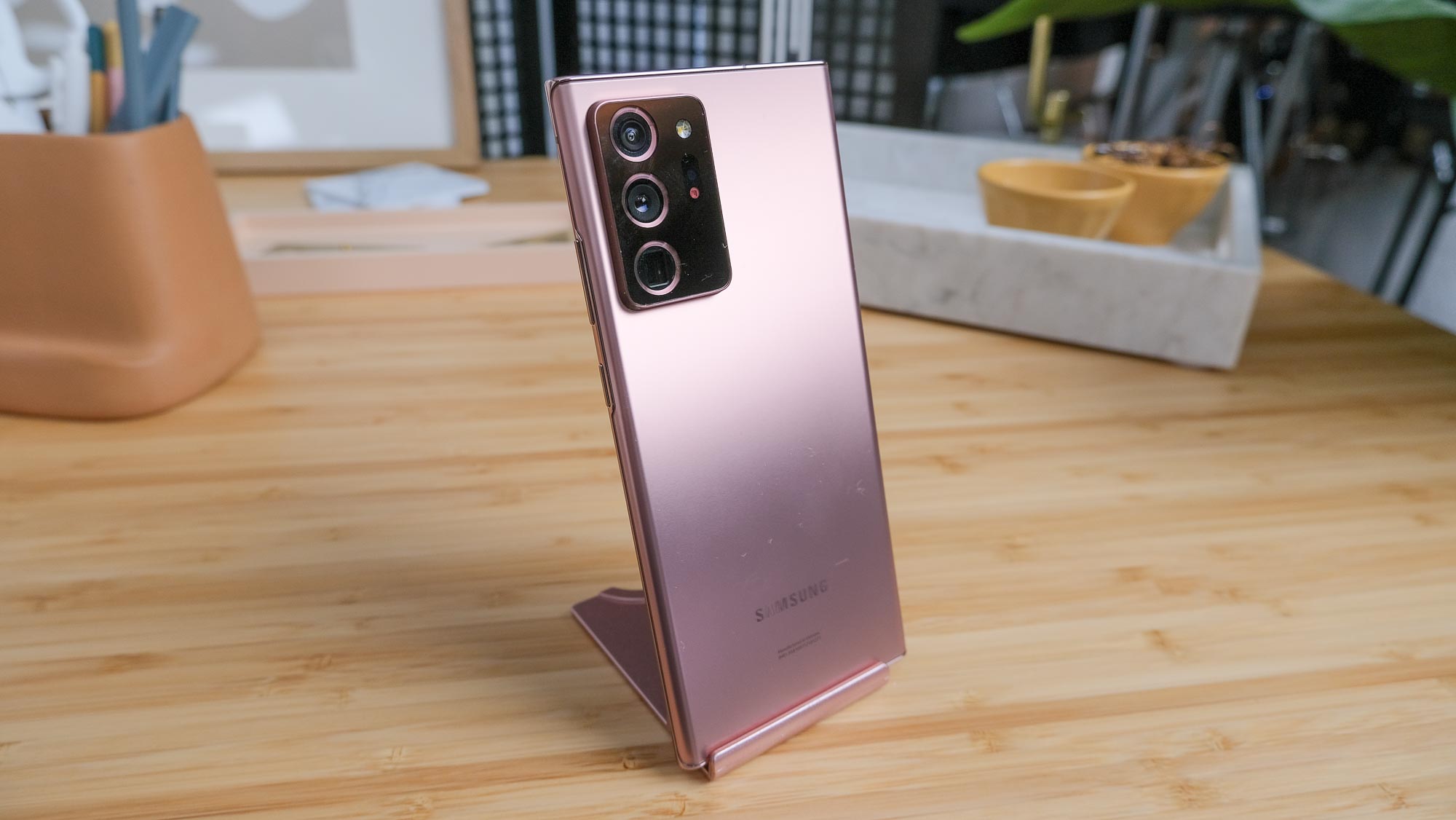
Flip over the phones, and you’ll see a big design difference. The Note 10 Plus camera array is pretty minimal, with its lenses descending down the left side of the phone. For the Note 20 Ultra, Samsung went with a more prominent square array that’s hard to look away from. It’s the one area where the Note 20 Ultra might be a step back from its predecessor.
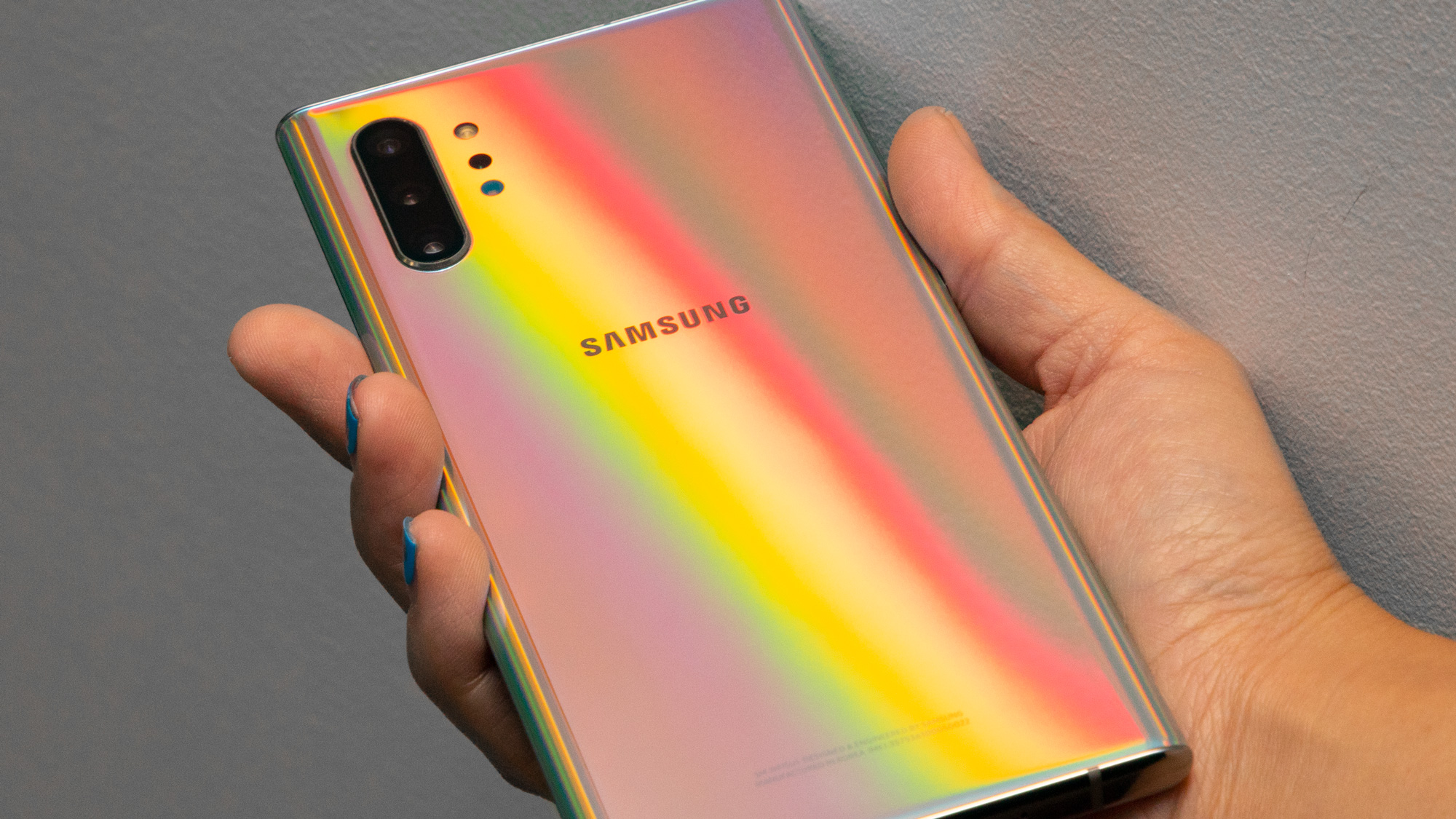
You’ll also have less dynamic color options with the new phone, as the Aura Glow option on the Note 10 Plus was a real eye-catcher. The Note 20 Ultra’s Mystic Bronze, Mystic Black and Mystic White options are not nearly as mystical as their names might have you believe.
Galaxy Note 20 Ultra vs. Galaxy Note 10 Plus display
The AMOLED panel on the Galaxy Note 20 Ultra is slightly larger than the one on the Note 10 Plus, with a 6.9-inch screen replacing the 6.8-inch display on last year’s phone. But that’s not the real story here.
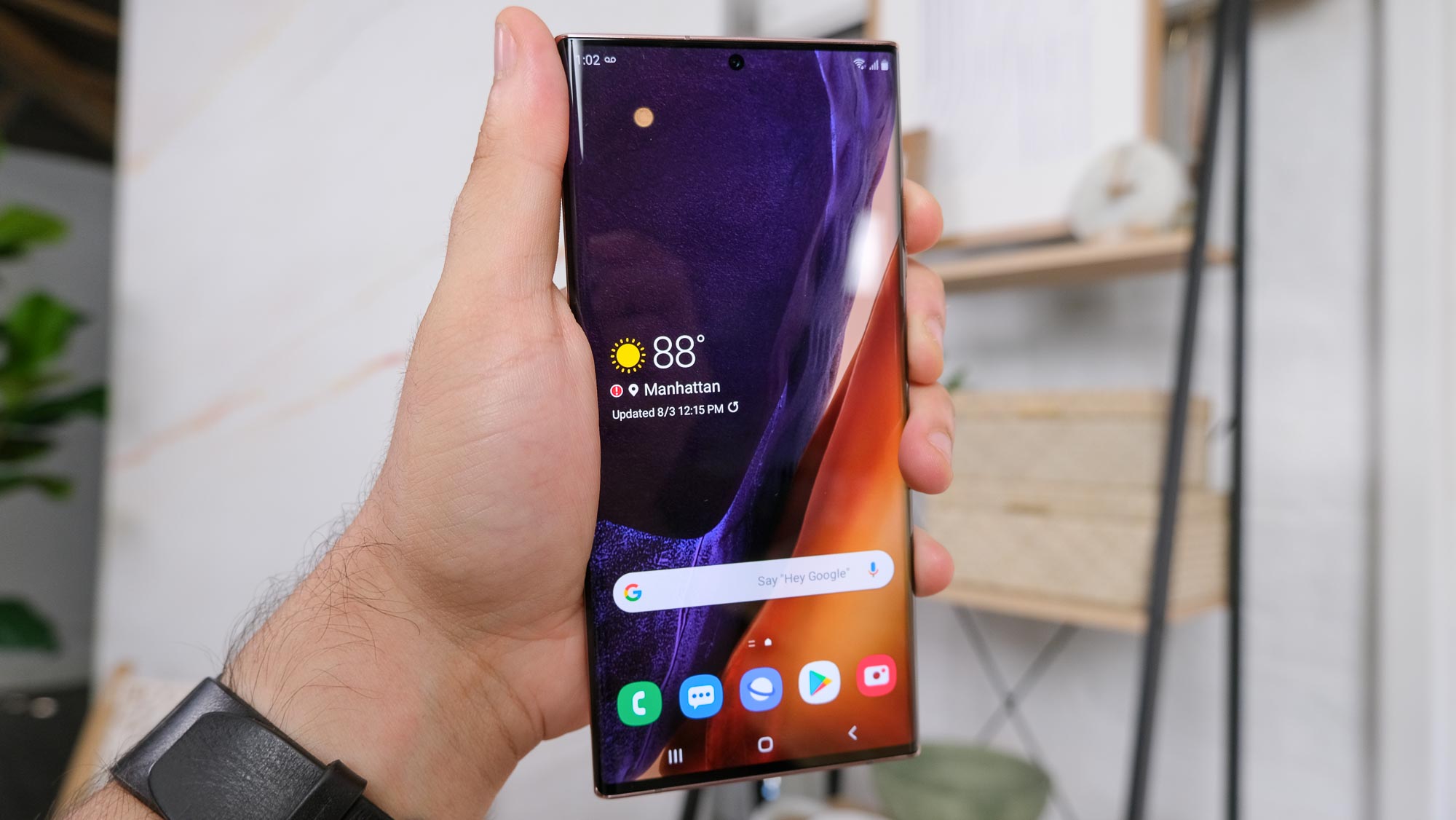
Instead, the most noteworthy thing about the Galaxy Note 20 Ultra is its use of a dynamic 120Hz refresh rate. That means the Note 20 Ultra can adjust how quickly it refreshes depending on what you’re using the phone to do. If you’re scrolling or playing a compatible game, the Note 20 Ultra will max out the refresh rate; when you’re engaged in more static activities, that refresh rate will scale all the way down to 10Hz if you’re looking at still images.
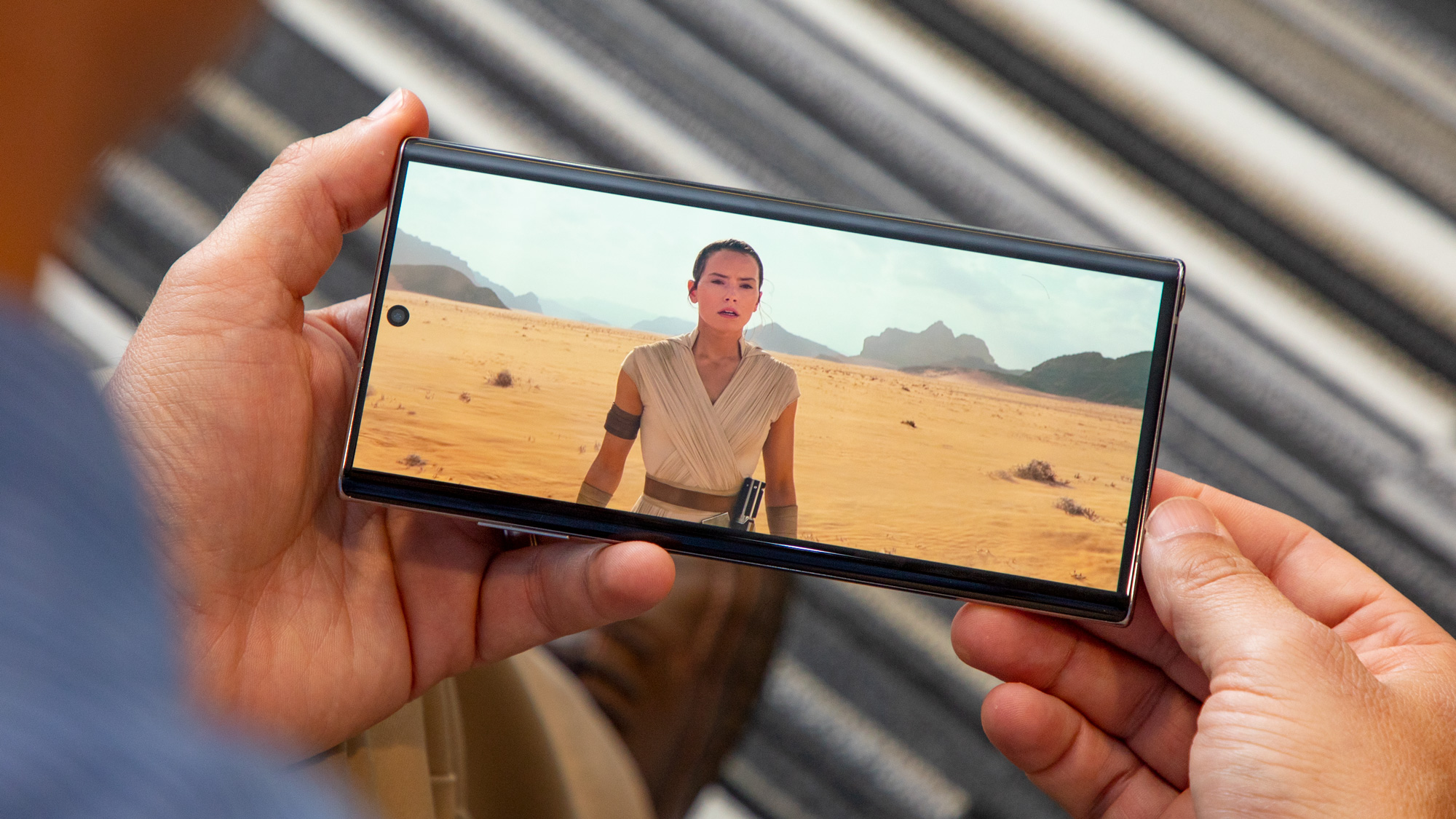
The Note 10 Plus just doesn’t compare to that feature, as it’s got a 60Hz refresh rate — typical of most smartphones, really. That said, HDR10+ support and Quad HD+ resolution means that the Note 10 Plus’ display is still sharp and colorful, even if it’s not as immersive as what the Galaxy Note 20 Ultra offers.
Galaxy Note 20 Ultra vs. Galaxy Note 10 Plus cameras
Samsung shuffled up the cameras it used on its different Galaxy Notes, scrapping a time-of-flight sensor on this year’s model but opting for more megapixels and a more powerful zoom. The results should be sharper photos with the Galaxy Note 20 Ultra, particularly when you’re zooming in on a subject, though we’ll have to pit the phones against each other in a photo face-off to be sure.
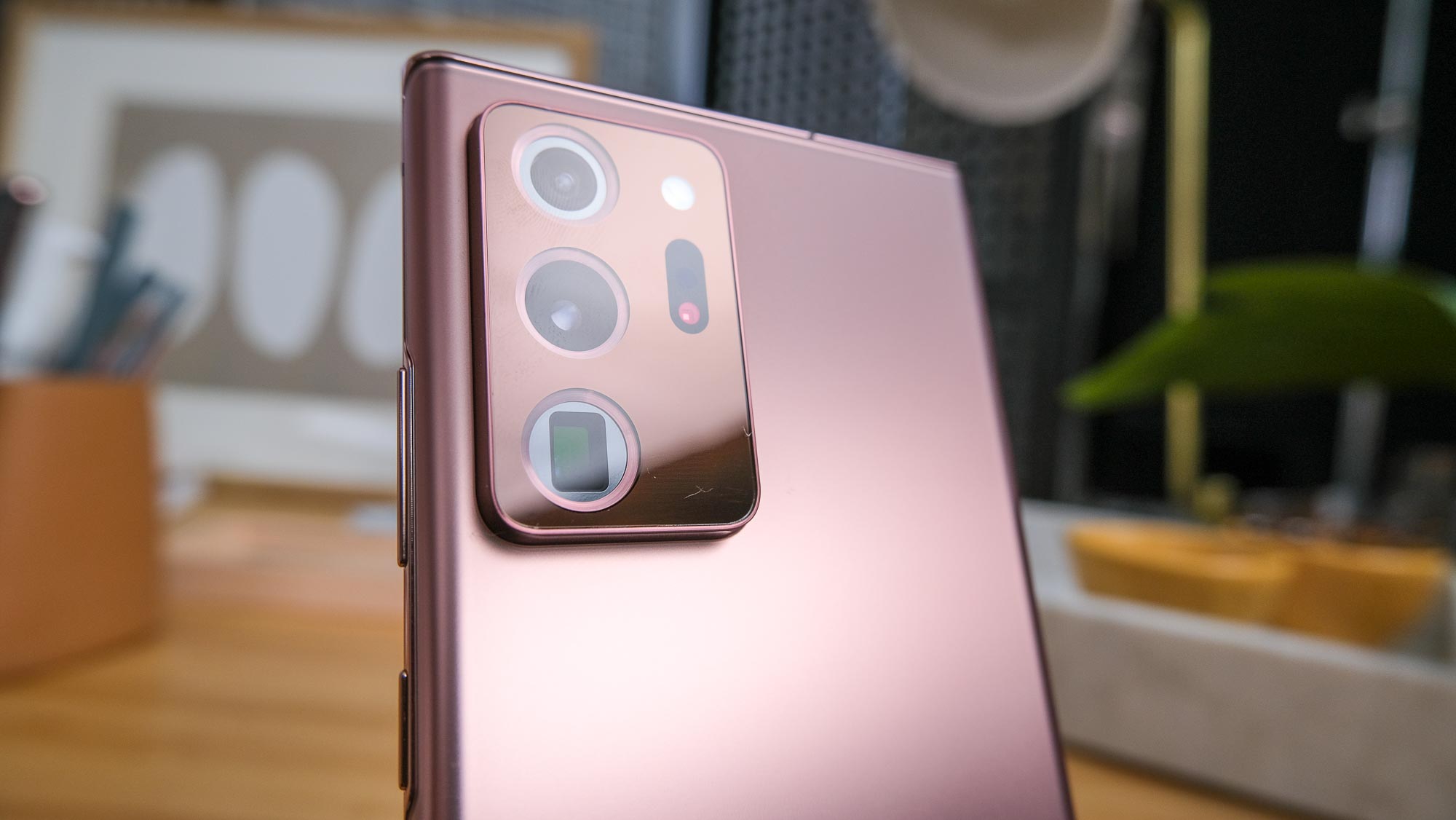
Specifically, the Galaxy Note 20 Ultra adopts the 108-megapixel main camera that Samsung first introduced with the Galaxy S20 Ultra. To help alleviate some of the focus issues users experienced with that earlier phone, Samsung added a laser autofocus sensor, which replaces the time-of-flight sensor found on last year’s Note 10 Plus. The main camera on that older Galaxy Note topped out at 12MP.
As for the other rear cameras, the Galaxy Note 20 Ultra features a 12MP ultra wide shooter and 12MP telephoto lens, compared with 16MP and 12MP ultra wide and telephoto shooters on the Note 10 Plus. The difference in telephoto lenses is stark, though. With the Galaxy Note 10 Plus, you could enjoy a 2x optical zoom. The Galaxy Note 20 Ultra increases that to 5x and, with the help of digital zoom, can get up to 50x. (Photos can get a little fuzzy at that point; we’d suggest stopping at 20x with the Galaxy Note 20 Ultra.)
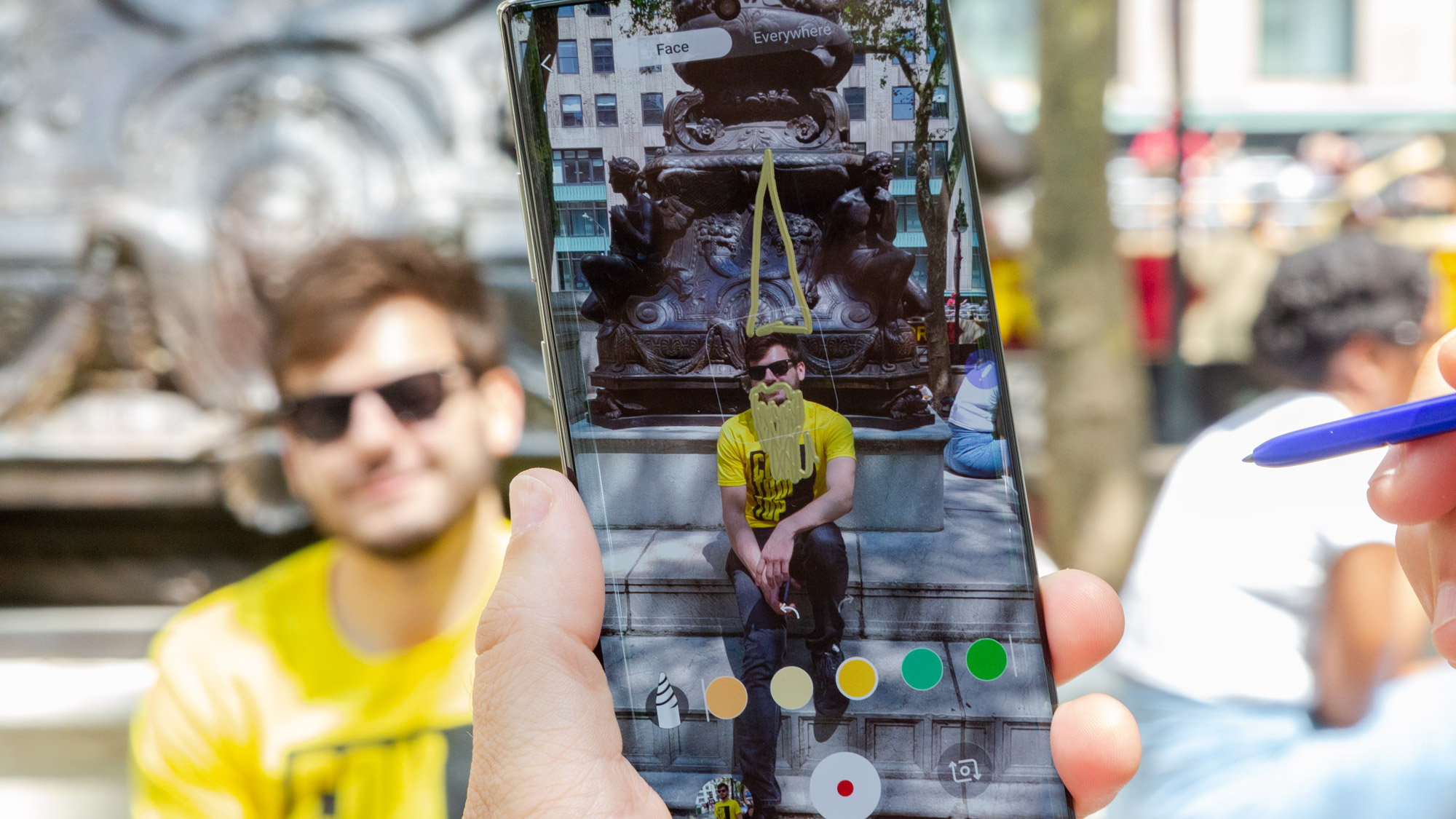
Up front, there’s no change in selfie cams with both Galaxy Note models turning to 10MP shooters with apertures of f/2.2.
Galaxy Note 20 Ultra vs. Galaxy Note 10 Plus performance
A new year brings a new mobile processor to top-of-the-line Android phones, and that’s the case with the Note 20 Ultra. But instead of upgrading from the Snapdragon 855 found in the Galaxy Note 10 Plus with this year’s Snapdragon 865 chipset, the Galaxy Note 20 Ultra uses the Snapdragon 865 Plus. That’s a variant of the 865 which features a faster core clock speed on the chipset’s CPU along with faster graphics rendering.

You’d expect the Note 20 Ultra to outperform the Note 10 Plus, though we don’t have official numbers confirming that just yet. However, we can get a pretty good idea by comparing the Note 10 Plus to the Galaxy S20 Ultra, which was powered by a mere Snapdragon 865. On Geekbench 5, the S20 Ultra posted a multicore score of 3,077 to the Note 10 Plus’ 2,691. You’d expect the Note 20 Ultra to do even better, thanks to its more powerful system-on-chip.
The Note 10 Plus actually comes with more on-board storage in its base model — 256GB to the Note 20 Ultra’s 128GB — with both phones also offering a 512GB option and microSD card slots to expand storage even further. Samsung packed both phones with 12GB of RAM.
By default, the Galaxy Note 20 Ultra comes with 5G connectivity, thanks to Qualcomm’s X55 modem, which is capable of working on all types of 5G networks. To get 5G with a Note 10 phone, you would have had to buy the $1,299 Note 10 Plus 5G.
Galaxy Note 20 Ultra vs. Galaxy Note 10 Plus battery life and charging
A bigger screen requires a bigger battery, and that’s what Samsung has gone with for the Galaxy Note 20 Ultra. The new phone features a 4,500 mAh power pack, a bump up from the 4,300 mAh battery inside the Note 10 Plus. That battery helped last year’s Samsung phone hold out for 10 hours and 47 minutes on our battery test, which involves continuous web surfing over LTE until a phone runs out of power. That result is better than the average smartphone, though the Note 10 Plus fell short of landing on our list of the best phone battery life, where you need to go at least 11 hours before you need a charge.
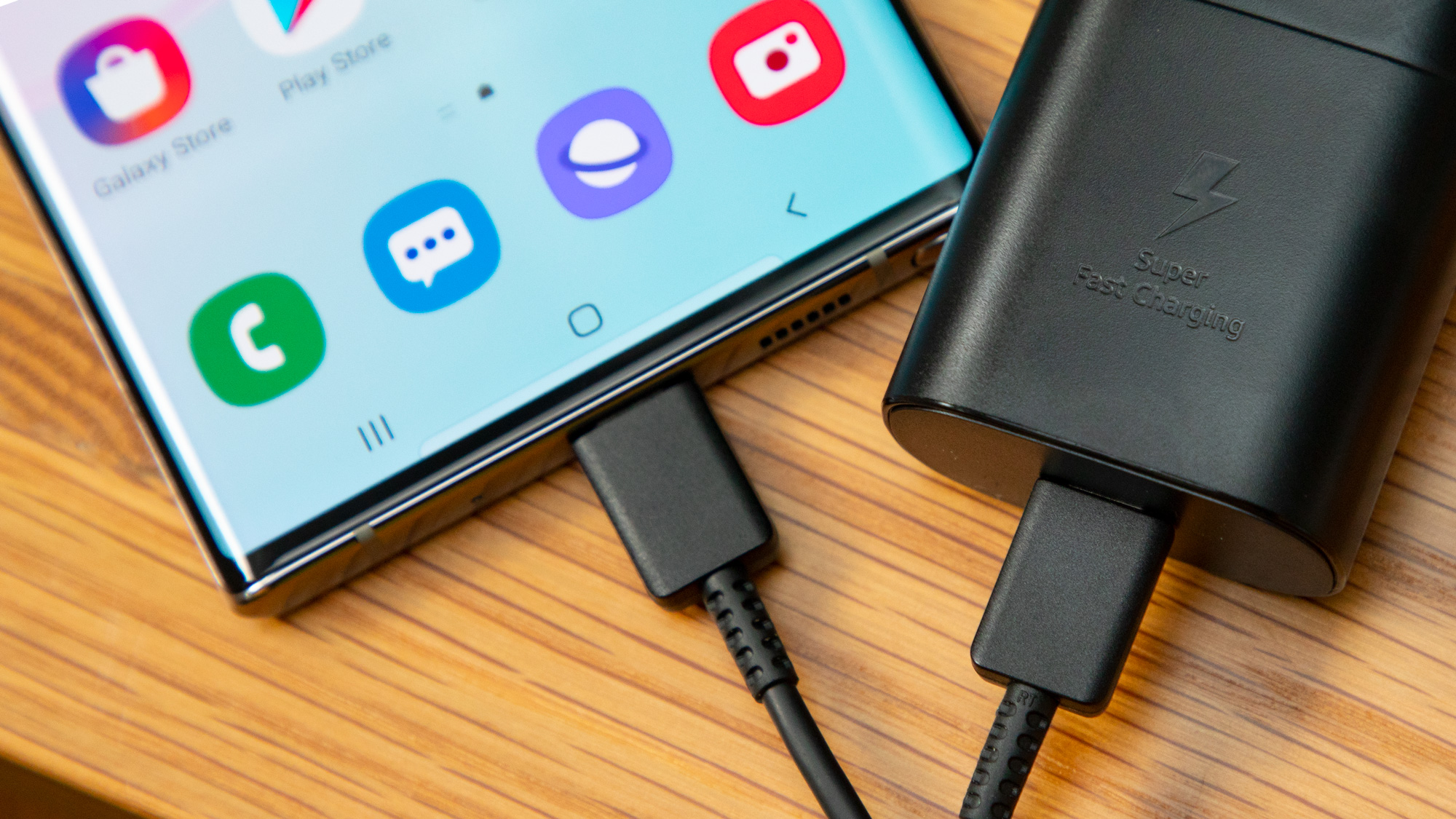
Can the Note 20 Ultra outperform its predecessor? The bigger battery will help, but we’re interested to see if the faster refresh rate on the new phone’s screen impacts battery life. It certainly did when we tested the Galaxy S20 Ultra with the 120Hz refresh rate enabled, as results three hours worse when we left the screen with a 60Hz refresh rate.
The Galaxy Note 10 Plus shipped with a 25W charger, which returns with the Galaxy Note 20 Ultra. Presumably, the new phone can work with Samsung’s 45W charger, which is sold separately, though Samsung hasn’t confirmed that. You can charge both the Note 10 Plus and Note 20 Ultra wirelessly.
Galaxy Note 20 Ultra vs. Galaxy Note 10 Plus S Pen and other features
The S Pen remains one of the marquee features for the Galaxy Note lineup, though you won’t find many new features added to the Galaxy Note 20 Ultra vs. the Galaxy Note 10 Plus. Instead, Samsung chose to build on the Air Actions it introduced with the Galaxy Note 10 models, adding new gesture based controls you can use with the phone’s stylus. The biggest change you’ll notice is in the performance of the S Pen, as the Note 20 Ultra version features a reduced latency of 9ms — that should make for a much more responsive stylus than before. The Note 20 Ultra also features an updated Note app with live syncing and the ability to match written notes with voice recordings.
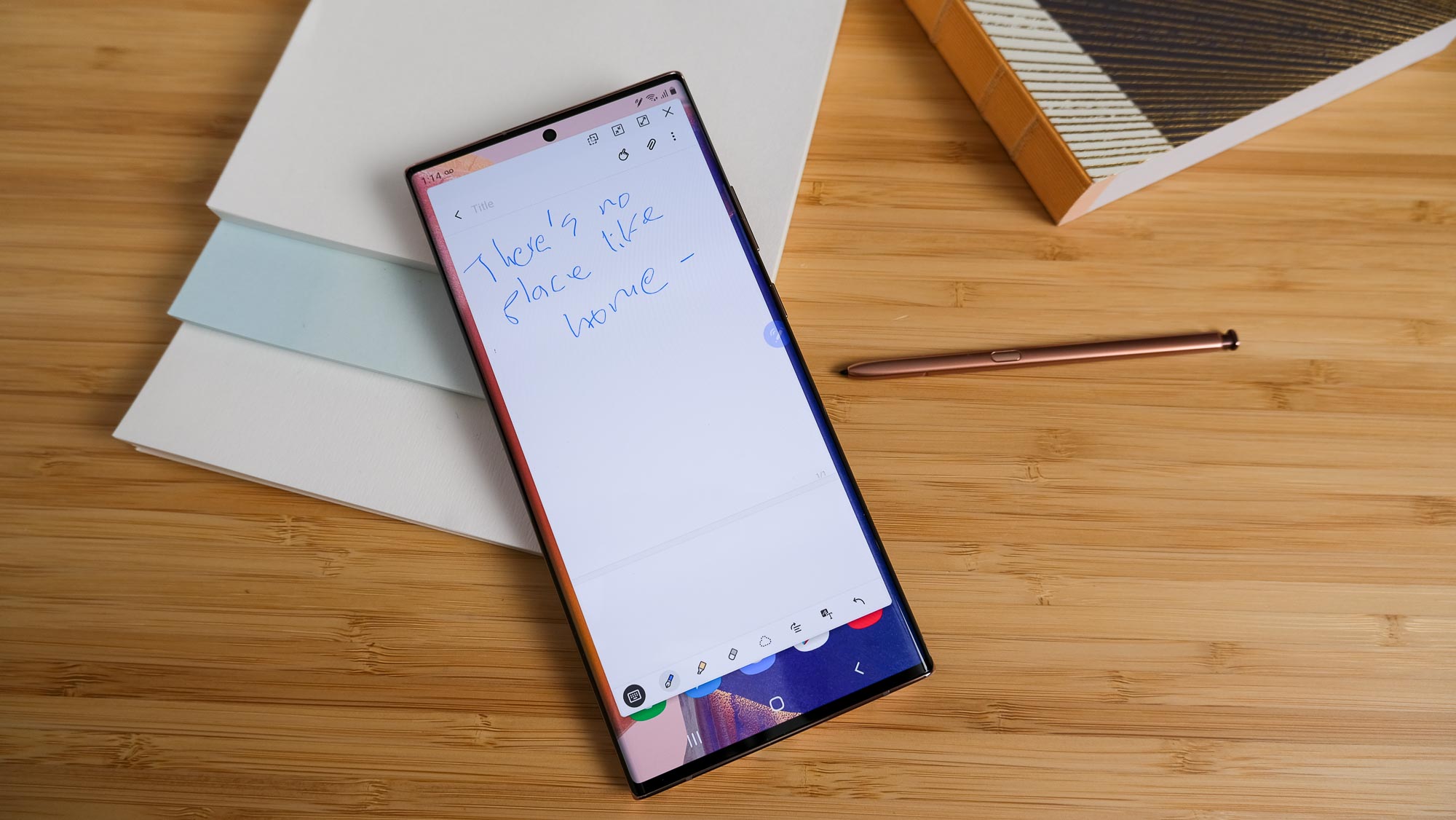
Like the Galaxy Note 10 Plus, the Galaxy Note 20 Ultra supports Samsung’s DeX mode, where you can use your phone like a portable PC if there’s a monitor nearby. The Note 10 Plus required either a dock or a cable to go into DeX mode — the Note 20 Ultra doesn’t need either, as it can support the feature wireless with any Miracast-compatible TV or monitor.
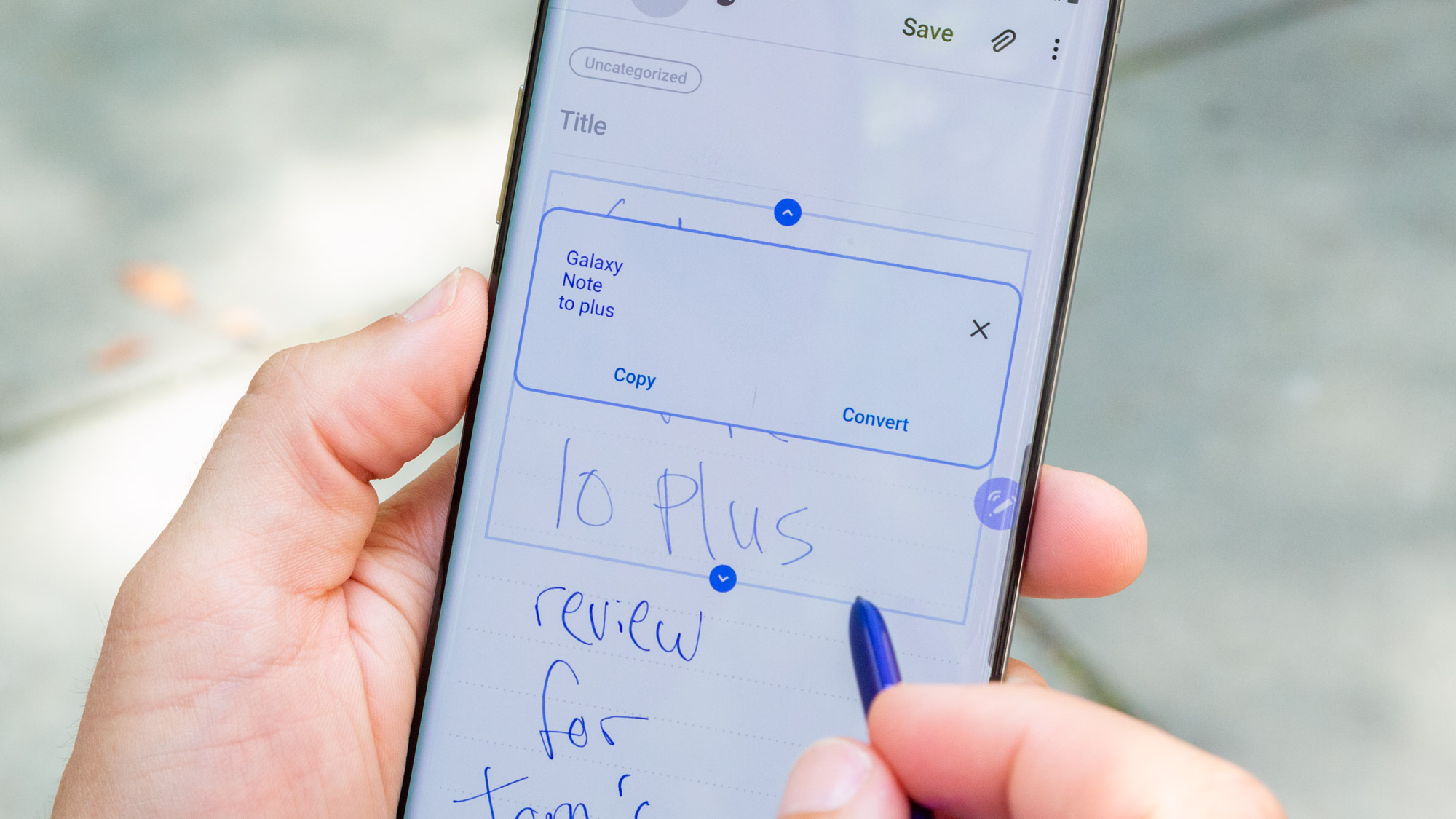
The Note 20 Ultra ships with Android 10 and Samsung’s One UI 2.0 interface. The Note 10 Plus has upgraded to Android 10 after initially shipping with Android 9. We wouldn’t expect an Android 11 update to be available for either phone until the end of 2020.
Galaxy Note 20 Ultra vs. Galaxy Note 10 Plus outlook
You’d expect a phone that’s a year older to be at least a year better than its predecessor. And while we’re still in the process of evaluating the Galaxy Note 20 Ultra, it looks like Samsung’s new phone has easily surpassed the Note 10 Plus.
The cameras on the Note 20 Ultra are more powerful, and the souped-up processor is all but certain to handle demanding apps and games more efficiently. We appreciate the fact that DeX no longer requires any sort of cable or dock with Samsung’ new phone, and the better performance of the S Pen is a bonus as well. But the real difference-maker is the faster refreshing display on the Galaxy Note 20 Ultra, which makes for a much more enjoyable experience.
The Galaxy Note 10 Plus is still a powerful phone, and unless you plan on taking advantage of a generous trade-in offer to mitigate the cost of upgrading, it would be hard to justify spending $1,299 on a new phone when your old Note still performs well. Still, if you want 5G connectivity, better overall performance and — most significantly — that more immersive display, the Galaxy Note 20 Ultra is the Samsung phablet to get.

Problem solver. Incurable bacon specialist. Falls down a lot. Coffee maven. Communicator.


